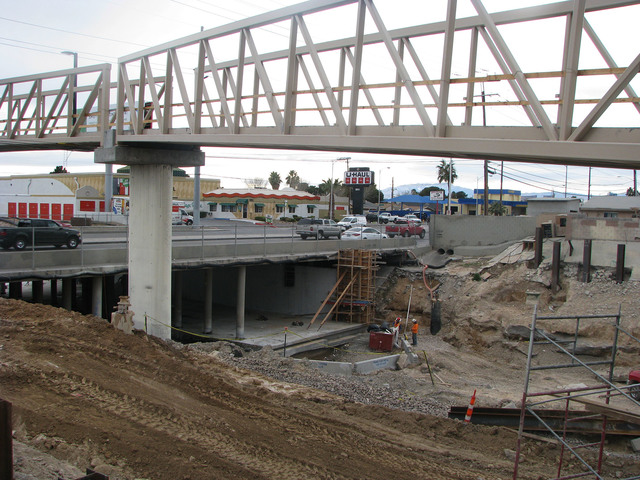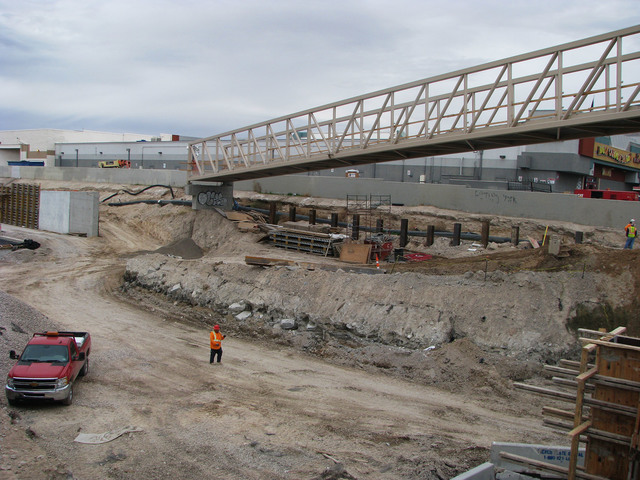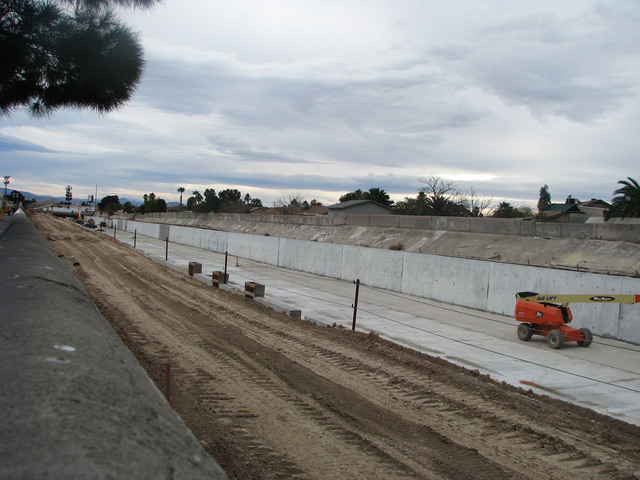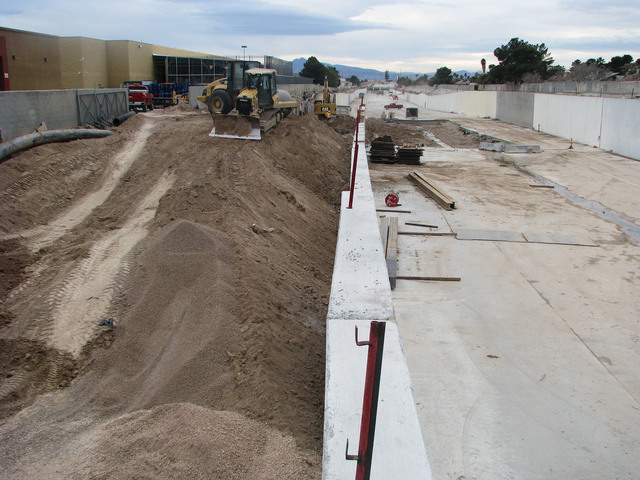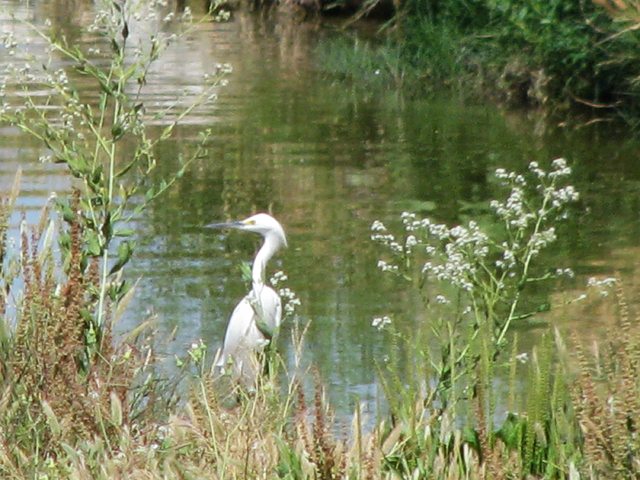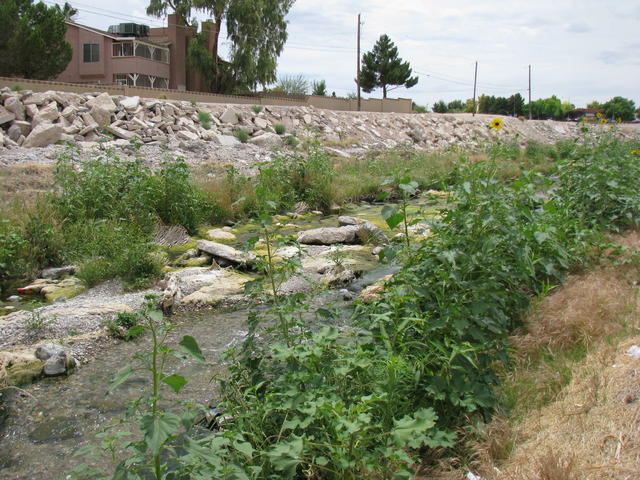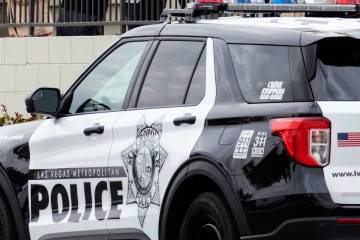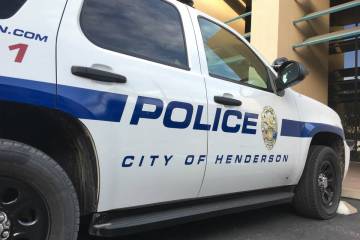East valley’s once-plentiful washes continue to vanish
The Las Vegas Wash between Charleston and Nellis boulevards is set to be paved over this year, as the east valley’s once-plentiful, nature-filled washes continue to disappear.
The project comes on the heels of decades of flood-control paving work in the Las Vegas Valley’s washes, the normally dry stream beds where rainwater and run off flow. It is scheduled to be finished in April, although workers estimate completion will be closer to June.
THE HISTORY
Flooding long has plagued the Las Vegas Valley, with hundreds of miles of territory all draining through the Las Vegas Wash. The Clark County Regional Flood Control District was formed in 1986, and members created a master plan to control the valley’s flowing waters. The first project broke ground two years later.
People were drawn to Las Vegas by springs at the current site of the Springs Preserve. Water flowed to great marshes and meadows in the central and east parts of the valley.
When the springs began to dry up, the washes still had a steady trickle of water feeding the life there, but much of that water came from runoff. As more of the valley was paved, runoff from roads and parking lots brought car oil, trash and pollution to the washes. That mixed with pet feces and chemicals from lawns and golf courses.
A massive flood July 8, 1999, highlighted the dangers of the flooding washes. Water surged through earthen channels, which widened and washed away three mobile homes near Boulder Highway and essentially shut Las Vegas down for the day. President Bill Clinton declared the valley a federal disaster area.
Installation of concrete channels was stepped up, particularly on the east side of the valley. Paradoxically, around the same time a trail system was implemented along the washes. The two projects proceeded in tandem, making the trails easier to reach but less green and aesthetically appealing.
Another flood, on Sept. 11, 2012, prompted a massive redesign to beef up flood-control measures at the county-owned golf course, which reopened as The Club at Sunrise on July 12, 2016.
At the time, Clark County Commissioner Chris Giunchigliani questioned whether the channelization contributed to the flooding. The Regional Flood Control District quickly determined that an unusual storm was the cause.
“Gail (Fraser, general manager of the Regional Flood Control District) explained that it’s simply a matter of engineering,” Giunchigliani said. “It’s a matter of the angle of the flow and the width of the channel. They only channelize what needs to be done, and that’s pretty much everything on the east side.”
SOME ARE SKEPTICAL
Some nostalgic residents are unconvinced the change from nature to concrete was needed.
“We used to catch crawdads in the washes,” said Rollie Gibbs, a longtime valley resident. “We used to ride our horse for hours out there in the marshes. Some years, it was so wet out there, we had to be careful not to get stuck in the mud.”
Fred Sigman spent his high school years from 1969 to 1972 studying and photographing the washes, particularly the area that is now Clark County Wetlands Park.
“The amount of wildlife was astounding,” he said. “My personal bird count was over 200 species. I also saw a few small mammals, including bobcats.”
Ken Kuszmaul, who grew up in the east valley, said he fondly recalls the smell of clean water and algae.
“Now it smells like (excrement) all the time ever since they put down the concrete,” he said. “There’s a ton of garbage, too. It was cool to pick the little cattails that used to grow there. Now it’s just a wasteland of evaporated water.”
To reach East Valley View reporter F. Andrew Taylor, email ataylor@viewnews.com or call 702-380-4532.



